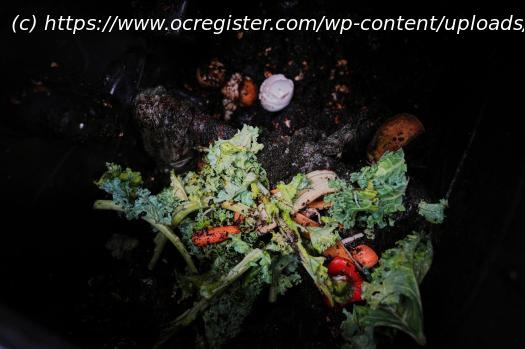Most of what goes into U.S. landfills is organic waste. It’s a problem because in that environment, organic waste produces methane, a potent greenhouse gas. Consumers can curb their environmental impact by composting their organic waste instead.
Most of what goes into U.S. landfills is organic waste, ranging from household food scraps to yard trimmings. That’s a problem because in that environment, organic waste is deprived of oxygen, which helps break material down.
The result: the release of a lot of methane, a potent greenhouse gas that contributes to global warming.
Consumers can curb their environmental impact by composting, which helps break material down in ways that reduce the release of methane. This can be done whether someone lives in a home with a yard or in an apartment without outside space. Composting also alleviates pressure on landfill space and results in a nutrient-rich substance that help soil.
Robert Reed, with the recycling and composting company Recology, said that applying compost makes soil better at retaining moisture, which makes it resilient against droughts, wildfires and erosion.
For people who want someone else to compost their food scraps, some local governments offer curbside pickup. Otherwise, nonprofits, farmers markets and community gardens often fill that gap. Companies in some areas also will pick up the food waste to be taken away for composting for a fee.
For those who want to try composting at home, here’s how to get started.Food scraps sit in a residential compost bin, Tuesday, July 29, 2025, in Cincinnati. (AP Photo/Joshua A. Bickel)
Composting doesn’t necessarily require much space. Even 4 square feet — roughly the size of a standard office desk — can do the trick. Common receptacles include open wooden bins or large barrel-shaped tumblers that you can rotate on a metal rod. Free-standing piles also work.
Some people follow a strict schedule of turning the pile, often with a hoe or shovel, or adding to it regularly. Backyard composting typically relies on microbes to break down the waste, which can bring a pile’s temperature up to 130-160 degrees Fahrenheit (54-71 degrees Celsius). Others follow a more passive approach.
Experts break the composting recipe down into four main ingredients: water, oxygen, nitrogen-rich “greens” (food scraps, grass clippings) and carbon-rich “browns” (cardboard, dead leaves, shredded paper).






